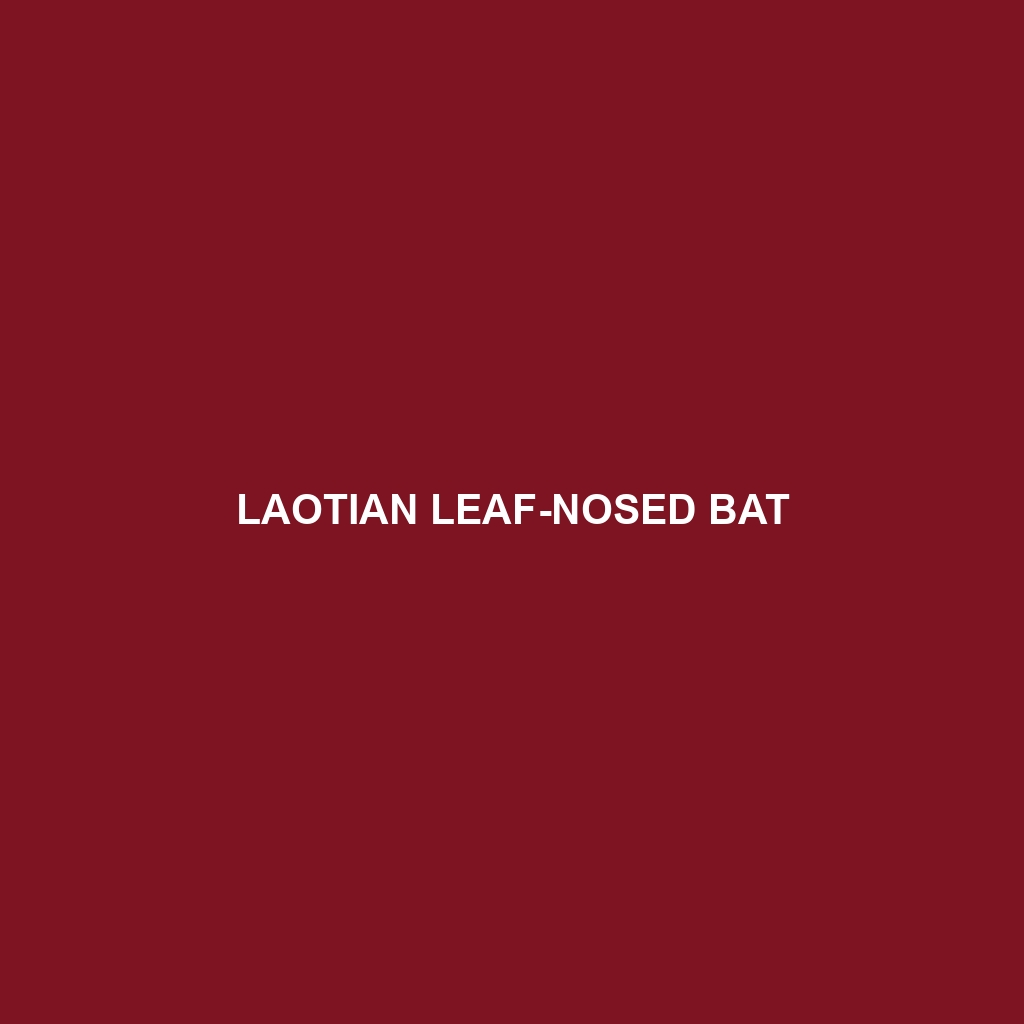Laotian Leaf-nosed Bat
Common Name: Laotian Leaf-nosed Bat
Scientific Name: Hipposideros lylei
Habitat
The Laotian Leaf-nosed Bat primarily inhabits the tropical and subtropical forests of Southeast Asia. Specifically, it is commonly found in Laos, Vietnam, and parts of Thailand. These bats prefer areas with dense vegetation that provide ample roosting sites in caves, tree hollows, and rock crevices. The humid environment of these regions supports their lifestyle and feeding habits.
Physical Characteristics
Measuring approximately 7 to 10 centimeters in body length, with a wingspan reaching around 30 centimeters, the Laotian Leaf-nosed Bat exhibits a slender body covered in soft, dark brown to gray fur. Its distinctive feature is the prominent leaf-like nose structure, which aids in echolocation. The bat’s large ears are also notable, contributing to its enhanced hearing, vital for navigation in the dark.
Behavior
This species is primarily nocturnal, exhibiting activity patterns that include foraging for food and social interactions during the night. Laotian Leaf-nosed Bats are known for their intricate vocalizations used for communication and navigation. They often roost in groups, which provides them with protection and social bonding opportunities. Their echolocation abilities allow for precise hunting, particularly in dense forest environments.
Diet
The diet of the Laotian Leaf-nosed Bat primarily consists of insects, particularly moths and beetles, which they capture during flight. Their feeding habits showcase their role as important pest controllers within their ecosystems. Additionally, they may consume nectar, indicating a potential role in pollination. This diverse diet is essential for maintaining ecological balance and highlights their adaptability.
Reproduction
Reproductive habits of the Laotian Leaf-nosed Bat typically involve a breeding season that occurs between March and May. Females usually give birth to a single pup after a gestation period of around two to three months. Maternal care is observed, with mothers nursing their young until they are capable of foraging independently. The strong social structure within roosting colonies supports the survival of the pups.
Conservation Status
The Laotian Leaf-nosed Bat is currently classified as vulnerable by the International Union for Conservation of Nature (IUCN). Habitat loss due to deforestation and human encroachment poses significant threats to this species. Conservation efforts are essential to protect their natural habitats and ensure sustainable populations.
Interesting Facts
One fascinating aspect of the Laotian Leaf-nosed Bat is its unique nose structure, which not only helps in echolocation but is also thought to play a role in attracting mates. Additionally, unlike many bat species, they are highly social and often seen interacting within their roosting groups, creating a dynamic community.
Role in Ecosystem
The Laotian Leaf-nosed Bat plays a crucial role in its ecosystem, acting as both a predator of insects and a potential pollinator. By controlling insect populations, they contribute to agricultural health and biodiversity. Their foraging habits also promote flower reproduction, showcasing their integral role in maintaining ecological balance.

